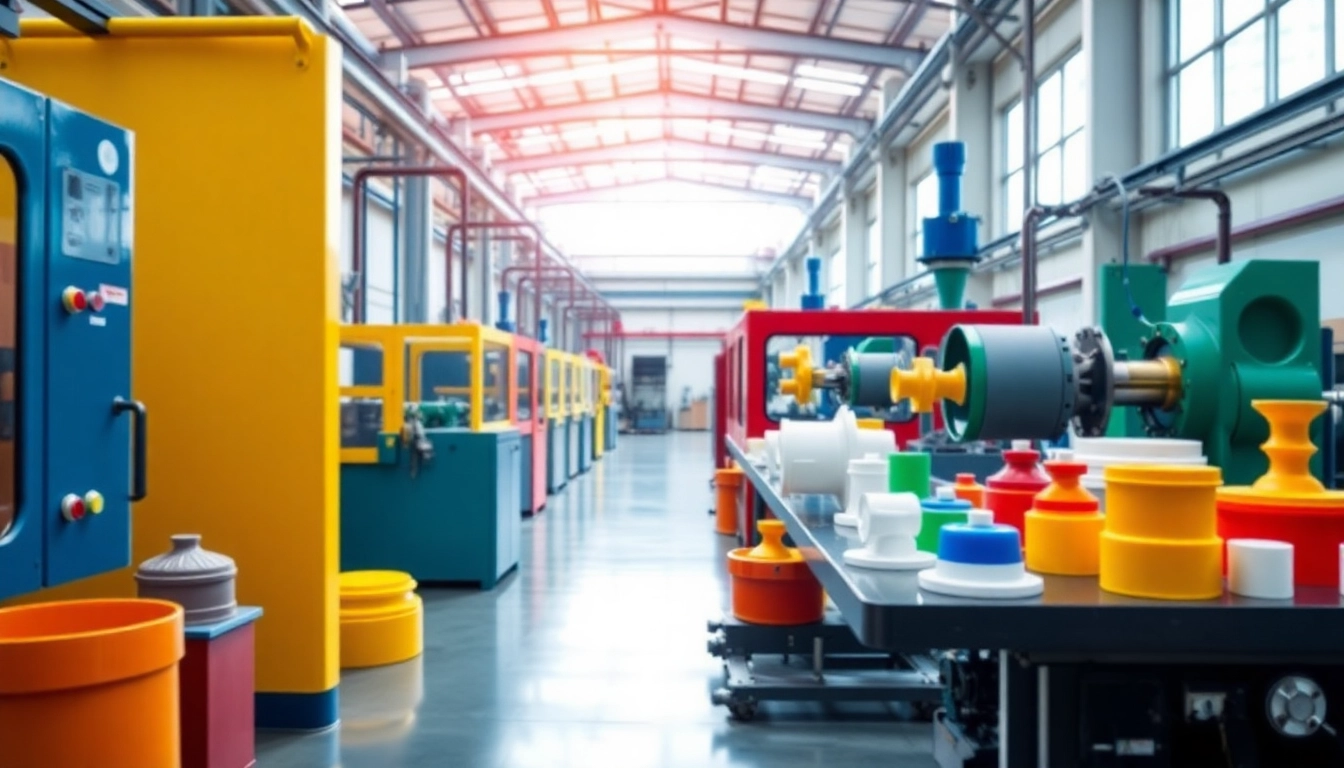Understanding Blow Moulded Plastic Parts
Definition and Overview of Blow Moulding
Blow moulding is a highly specialized manufacturing process used to produce hollow plastic parts. This method employs the principle of using air to form the plastic material into a desired shape. One of the key advantages of blow moulding is its ability to create lightweight yet robust components, making it a favorite in various industries. It incorporates multiple steps, including heating the material into a malleable state, shaping it using a mould, and finally, applying air pressure to expand the element to its full size. For those seeking advanced solutions for tailored manufacturing, blow moulded plastic parts represent a significant innovation in design and functionality.
Types of Blow Moulded Plastic Parts
There are several types of blow moulding methods, each suited for different applications and producing varying types of parts.
- Extrusion Blow Moulding (EBM): This technique extrudes a continuous hollow tube of plastic, which is then placed into a mould. Once the mould closes, air inflates the tube, shaping it into the desired form. EBM is commonly used for packaging applications such as bottles and containers.
- Injection Blow Moulding (IBM): This process involves injecting molten plastic into a preform, which is then transferred to a mould where air inflates it to its final shape. This method is advantageous for producing complex shapes with precise dimensions, making it ideal for high-quality containers.
- Injection Stretch Blow Moulding (ISBM): Combining both injection and stretching methods, ISBM allows the creation of very strong and lightweight containers. This technique is often used to produce PET bottles that are both durable and clear, appealing to beverage industries.
Applications in Various Industries
Blow moulded plastic parts find widespread use across numerous sectors. Their lightweight yet sturdy characteristics make them ideal for applications in:
- Packaging: The most common application, particularly for beverages, household products, and industrial goods.
- Automotive: Parts such as air ducts and fuel tanks benefit from the lightweight nature of blow moulded components, improving fuel efficiency.
- Consumer Goods: Toys, containers, and various household items that require durable yet cost-effective solutions.
Benefits of Blow Moulding Techniques
Cost-Effectiveness in Production
One of the primary benefits of blow moulding is its cost-effectiveness. The process is highly automated and can produce large quantities of parts with minimal human intervention. Consequently, the cost per unit decreases significantly. Moreover, the high-speed cycle times in blow moulding translate to reduced operational costs.
Design Flexibility and Customization
Blow moulding offers substantial design flexibility. Manufacturers can create complex shapes and sizes tailored to specific customer needs. With advanced moulding technologies, designers can experiment with varied geometries, integrating aesthetics with functionality in a seamless manner.
Impact on Sustainability and Material Use
Sustainability is an increasingly essential consideration in manufacturing processes. Blow moulding employs materials that are often recyclable, such as PET and HDPE, affirming its position as an environmentally friendly choice. By optimizing material usage, manufacturers can significantly reduce waste, bolstering their sustainability efforts.
Common Materials Used in Blow Moulding
Popular Plastics for Blow Moulded Parts
The choice of plastic material significantly influences the quality and characteristics of blow moulded parts. The most commonly used materials include:
- Polyethylene (PE): Available in High-Density (HDPE) and Low-Density (LDPE) variants, PE is widely used due to its excellent flexibility, durability, and chemical resistance.
- Polypropylene (PP): Recognized for its high melting point and rigidity, PP is favored in automotive and appliance applications.
- Polyethylene Terephthalate (PET): Often used in food and beverage packaging, PET offers clarity, strength, and barrier properties.
Material Properties and Their Influence
The choice of material impacts the mechanical properties, thermal stability, and chemical resistance of the final product. For instance, using PET enhances product transparency, while high-density polyethylene can provide increased strength against pressure. Selection criteria often depend on application-specific requirements and potential environmental factors.
Comparisons with Other Moulding Methods
When comparing blow moulding to other methods like injection moulding or rotational moulding, it becomes evident that the choice greatly affects production efficiency, cost, and the types of products produced. Blow moulding often has shorter cycle times, allowing for faster production rates. Conversely, injection moulding may provide more precise control over part dimensions, making it suitable for components needing high accuracy.
Challenges in the Blow Moulding Process
Quality Control and Defect Prevention
Maintaining a high level of quality is paramount, and blow moulding faces several challenges. Common defects such as wall thickness variation, part warpage, and improper inflation must be monitored and controlled. Implementing advanced quality control systems using digital monitoring can help mitigate these challenges.
Cost Factors in Material and Production
While blow moulding is generally cost-effective, fluctuations in raw material prices and production costs can impose pressures on manufacturers. Employing strategic material sourcing and lean production techniques can help in managing these expenses effectively.
Technological Limitations and Solutions
The advancement of technology is crucial to overcoming limitations in the blow moulding process. Innovations such as 3D printing for rapid prototyping and automated robotic systems for handling can streamline production and mitigate risks associated with manual operations.
Future Trends in Blow Moulding Technology
Advancements in Automation and Robotics
As the industry shifts towards increased automation, the application of robotics in blow moulding is expected to rise. Automation can enhance productivity, reduce human error, and streamline operations, catering to an increasing demand for customization in production.
Growth of Eco-Friendly Materials
Eco-consciousness is pushing the boundaries of material innovation in blow moulding. The adoption of biodegradable plastics and recycled materials is anticipated to grow, aligning manufacturing processes with global sustainability goals.
Market Trends and Innovations Emerging in Blow Moulding
The market for blow moulded products continues to expand, driven by technological advancements and consumer demand for innovative packaging solutions. New tooling technologies, along with enhanced production methods, are on the horizon, promising improvements in efficiency and product quality.
